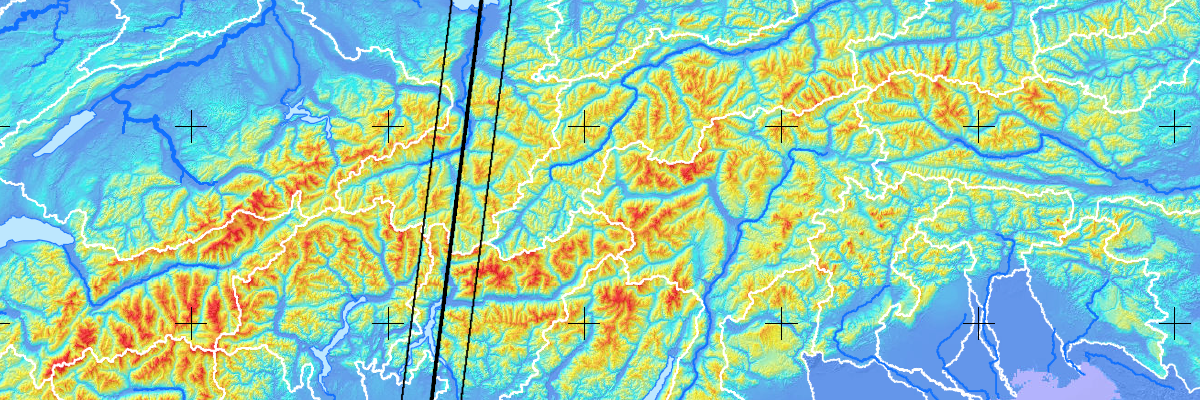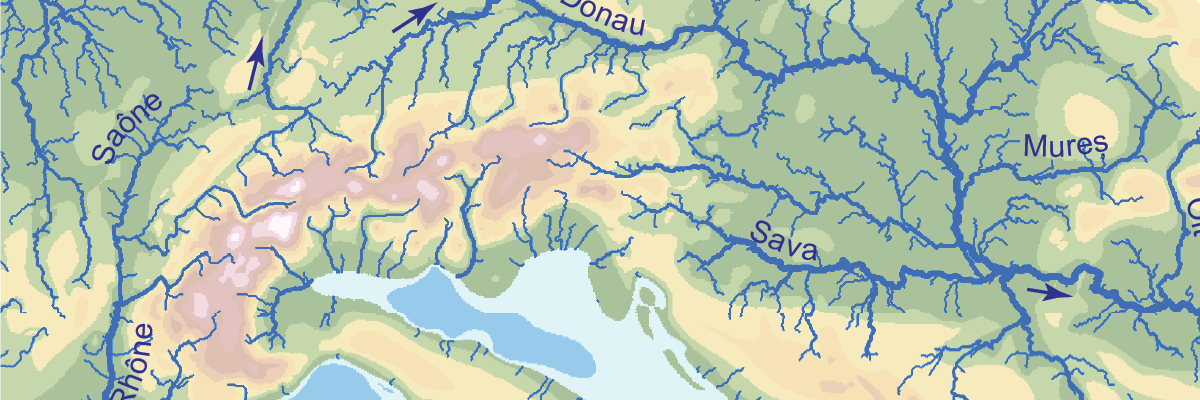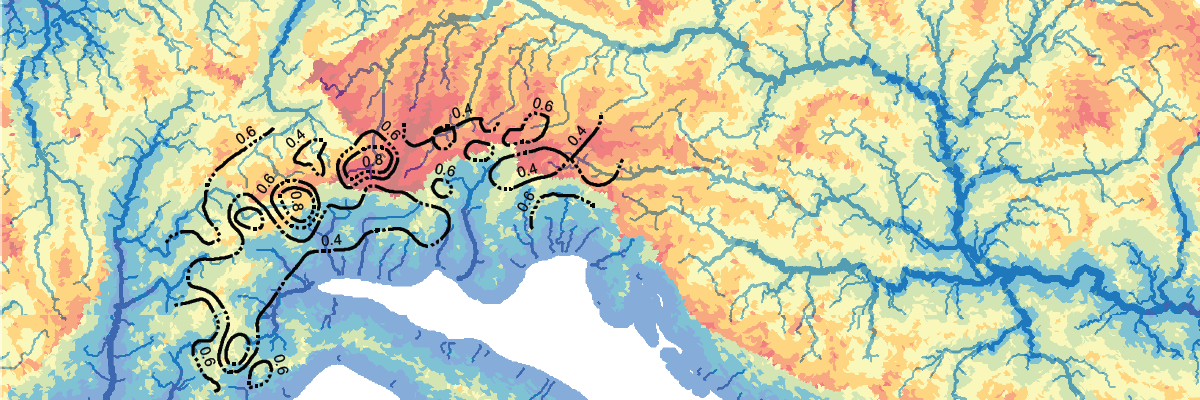





Earth’s surface is a prime factor for many fields of research such as earth sciences (geology, meteorology, etc.) or biology (natural barriers). Water dominates the surface with oceans, seas and lakes. Furthermore, rivers shape the land surface with their erosive power.
The surface of today is well known. It is of prime importance for many fields of research. However, the surface of the past is known in much less detail. Nevertheless, detailed models of past river networks and elevation distributions are a crucial base for various models. Geology, climate sciences, glacier sciences and also biologists benefit of a surface-model that precisely defines topographic features of the past.
On this page we present results of a doctoral thesis conducted at ETH Zürich that presents paleo-topographic maps and a method to model such maps. The models use various (mostly geologic and tectonic) evidence and are subject of continuous improvements as new relevant evidence is published. The model can also include knowledge from biological sciences in that an evolutionary or species spreading boundary can be used as a boundary in a future model.
The website presents the data in maps and provides the raw input data needed to reproduce or improve the topographic calculations. On the references site we list scientific publications that can be used to cite this page.
The paleo-topography is a raster dataset with a resolution of 2 km.
The paleo-river-map is a vector model of a past river network. It bases on the 2km paleo-topography and shows a dendritic river model with no carstic phenomena or closed basins.
Sascha Winterberg, Dr. sc. ETH Zürich
Dolderstrasse 34, 8032 Zürich
saschaw@ethz.ch